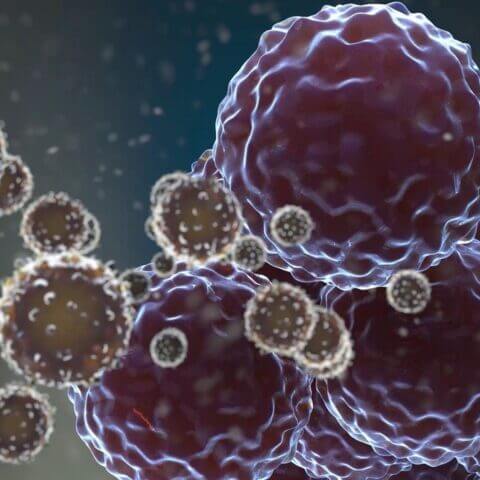Gene therapy holds the potential of long-term efficacy or even a cure for diseases with an underlying genetic basis, offering hope to patients with currently incurable diseases.
The use of gene therapy for dermatologic conditions is attractive for many reasons:1
- As the largest organ of the human body, skin is easily accessible for gene delivery
- The skin is a superficial organ, making it easy to manipulate and evaluate
- The skin is associated with a variety of monogenic diseases, conditions that arise from a well-defined single gene mutation
Despite factors that make the skin a desirable target for gene therapy, there are still no FDA-approved gene therapies for any dermatologic indications. Early efforts aimed at developing an effective gene therapy for skin diseases were hampered by several key hurdles:2 3
- Challenges in inducing sustained gene expression in vivo
- Difficulties in targeting genes to stem cells
- Obstacles in traversing the layered structure of the skin to achieve targeted, uniform transfer to different skin compartments
In this article, we review gene transfer techniques and gene delivery systems that could potentially be used for treating dermatologic conditions.
Gene transfer techniques
There are two primary approaches for gene transfer:
- In vivo gene therapy, where genetic material is transferred using a vector directly into the patient’s skin
- Ex vivo gene therapy, where cells collected from the patient using a skin biopsy are cultured, genetically manipulated, and then re-administered to the patient via injection, grafting, or some other method
The preferred approach will depend on the underlying dermatologic condition, as well as the vector used for gene delivery.
Viral vectors for gene delivery
The epidermis was one of the first targets for in vivo experimental gene transfer, where vectors are administered directly to the patient.4 While there are non-viral gene delivery systems, viruses — particularly retroviruses — remain the most commonly used vectors for cutaneous gene transfer. Retroviral vectors transcribe their RNA into DNA and then integrate into the infected host genome. For epidermal stem cell populations, which have a low mitotic rate, lentiviral vectors may be preferred for in vivo therapy due to their ability to infect non-dividing cells.1 For ex vivo gene therapy, both oncoviral and lentiviral vectors have demonstrated the capacity for long-term therapeutic gene expression in skin.5 6 Adenoviruses, the most commonly used gene therapy vector across all therapeutic areas, have demonstrated only about two weeks’ expression in the skin, which may limit their utility in dermatologic conditions that require long-term expression.1
Non-viral vectors for gene delivery
Compared to viral vectors, non-viral vectors such as plasmid DNA may be more cost-effective, less toxic, and less immunogenic. Non-viral gene transfer is typically characterized by short-term gene expression and low transfection efficiency, which may be desirable for wound healing. While the preferred method of cutaneous DNA delivery is topical application, the efficiency of transgene delivery with this route is low as the stratum corneum limits DNA transport.1
Other methods for physical or mechanical delivery of genes include ultrasound- or electrical field-mediated gene transfer, magneto-permeabilization, and microneedles. Research has also focused on methods such as biodegradable nanoparticle carrier systems for enhancing the efficiency of topical, dermal, or transdermal gene delivery. However, due to low transfection efficiency in vivo compared with viral vectors, nucleic acid vectors may have limited utility for gene therapy in skin diseases.
What to expect in the future
To date, the most significant clinical advances in gene therapy for dermatologic conditions have been made in epidermolysis bullosa, with three companies currently conducting pivotal trials.7 Gene therapy is also being actively studied for melanoma and ichthyosis.8 9 We will explore these advances in the next article in our dermatology gene therapy series.
There remains room for additional progress. Of the 1,052 clinical trials involving gene therapy, gene-modified cell therapy, cell therapy, and tissue engineering, only 22 studies are focused on dermatologic conditions.10 Advances in the molecular characterization of dermatologic diseases continue to deepen our understanding of the underlying pathogenic processes and gene expression profiles involved in skin disorders. With continued optimization of vector design and gene transfer strategies, as well as the development of imaging tools for monitoring gene delivery and treatment response, we expect to see an increase in the number of dermatology gene therapy trials in the coming years.
With expertise across most major dermatological indications, more than 190 rare disease studies in the past five years, and product development experience with multiple next-generation biotherapies including gene therapy, Premier Research is uniquely positioned to support innovators in this developing field. Contact us today to learn more.
1 Gorell E, at al. Gene therapy for skin diseases. Cold Spring Harb Perspect Med. 2014;4(4):a015149.
2 Somani AK, Esmail N, Siminovitch KA. Gene therapy and dermatology: more than just skin deep. J Cutan Med Surg. 1999;3(5):249-259.
3 Kaspar RL, et al. Imaging functional nucleic acid delivery to skin. Methods Mol Biol. 2016;1372:1-24.
4 Williams RS, et al. Introduction of foreign genes into tissues of living mice by DNA-coated microprojectiles. Proc Natl Acad Sci. 1991;88:2726-2730.
5 Larcher F, et al. Long-term engraftment of single genetically modified human epidermal holoclones enables safety pre-assessment of cutaneous gene therapy. Mol Ther. 2007;15:1670-1676.
6 Siprashvaili Z, et al. Long-term type VII collagen restoration to human epidermolysis bullosa skin tissue. Human Gene Ther. 2010;1299-1310.
7 Evaluate. Gene therapies go skin deep to tackle epidermolysis bullosa, March 11, 2019. Available at https://www.evaluate.com/vantage/articles/analysis/spotlight/gene-therapies-go-skin-deep-tackle-epidermolysis-bullosa. Accessed March 18, 2020.
8 ClinicalTrials.gov. Search for melanoma gene therapy, March 18, 2020.
9 ClinicalTrials.gov. Search for ichthyosis gene therapy, March 18, 2020.
10 Alliance for Regenerative Medicine. Q3 2019 Data Report. Available at https://alliancerm.org/publication/q3-2019-data-report/. Accessed February 26, 2020.

 Perspectives Blog
Perspectives Blog 


